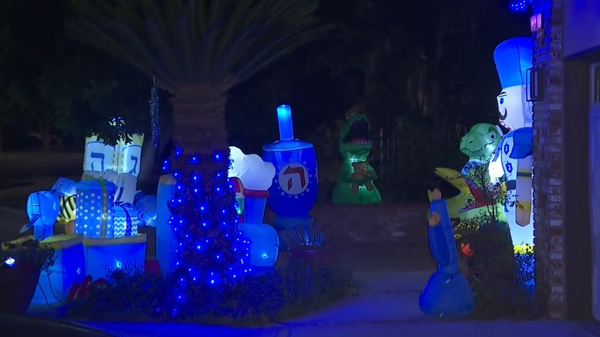/https://static.texastribune.org/media/files/2c26b661deb6a099dacae33fa7898819/0717%20RGV%20Water%20-%20NASWC%20EG%20TT%2028.jpg)
Subscribe to The Y’all — a weekly dispatch about the people, places and policies defining Texas, produced by Texas Tribune journalists living in communities across the state.
LUBBOCK — The Texas House on Tuesday approved a key piece of legislation that brings Texas one step closer to investing $1 billion annually to address the state’s water shortage.
House Joint Resolution 7, led by state Rep. Cody Harris, R-Palestine, was overwhelmingly approved by the lower chamber, 138-6. Tuesday’s vote sets the proposal on a path to voters. If the Senate also approves it, voters will be asked in November to approve the spending, which comes from the state’s sales tax.
The Senate has a similar proposal, asking voters for dedicated funding. However, it spells out how the money is to be used. Written by state Sen. Charles Perry, R-Lubbock, Senate Joint Resolution 66 calls for 80% of the $1 billion to go toward projects that create new water supply, such as desalination or produced water treatment plants. The remaining 20% would be split among several programs that address other needs, including infrastructure upgrades for aging pipes, drinking water and wastewater treatment plants.
Harris’ House resolution does not specify how the billions should be spent. The Texas Water Development Board, the state agency that helps manage the state’s water, would determine how the money is allocated. Harris told lawmakers the Legislature will work with the board on those decisions, but the board will decide. He also presented an amendment that protects existing groundwater supply, stating the new water supply fund could not be used for groundwater projects unless it’s brackish groundwater.
On the House floor Tuesday, Harris said the Legislature has the opportunity to address Texas’ growing water needs by passing the resolution.
“This is an incredible opportunity for us to tackle this issue,” Harris said.
[Texas is running out of water. Here’s why and what state leaders plan to do about it.]
Texas water supply faces several threats, including a growing population, climate change and leaking infrastructure. Texas does not have enough water to meet demand in the case of a historic drought, according to state data. The situation will become dire if the hundreds of projects detailed in the state water plan are not completed.
Another piece of sweeping legislation, Senate Bill 7, is making its way through the legislative process. Also written by Perry, it covers a wide range of water needs and issues. The Senate
unanimously approved it earlier this month. However, Harris made changes to the bill while it was in a House committee. The changes were celebrated by the state’s water community. If the House approves the bill, the two chambers will have to reconcile the differences to pass the legislation forward.
During a debate on the House Floor, state Rep. Brian Harrison, R-Midlothian, objected to dedicated funding for water needs. Harrison argued the money should be going to property tax relief. Harris disagreed and argued that securing the state's water supply was an economic imperative.
“The Texas economy will come to a screeching halt,” Harris said, evoking the link between the state’s water supply and economy that fuels the state’s budget.
Members of the state’s water community celebrated the bill’s passage. Jennifer Walker, director of the Texas Coast and Water program for the National Wildlife Federation, called it a historic win for Texas.
“Having sustained investments is going to be a huge help,” Walker said. “This allows flexibility for the water board to utilize all the programs at their disposal to best meet the needs of Texas communities.”
Perry Fowler, executive director of the Texas Water Infrastructure Network, said it was encouraging to see bipartisan support for the bill.
“We’re optimistic that a reasonable and balanced funding approach will prevail,” Fowler said. “One that empowers the Texas Water Development Board to support the full range of vital programs eligible.”
According to Texas 2036, Texas needs to invest at least $154 billion over the next 50 years on water supply projects and infrastructure upgrades. While there are other state and federal programs to fund water needs, there is still a projected shortfall in funding of $112 billion.
Water needs have become a focal point for Texas lawmakers in recent years. In 2023, the Texas Legislature allocated a one-time investment of $1 billion to create the Texas Water Fund, with approval from voters.
Disclosure: Texas 2036 has been a financial supporter of The Texas Tribune, a nonprofit, nonpartisan news organization that is funded in part by donations from members, foundations and corporate sponsors. Financial supporters play no role in the Tribune's journalism. Find a complete list of them here.
Tickets are on sale now for the 15th annual Texas Tribune Festival, Texas’ breakout ideas and politics event happening Nov. 13–15 in downtown Austin. Get tickets before May 1 and save big! TribFest 2025 is presented by JPMorganChase.







